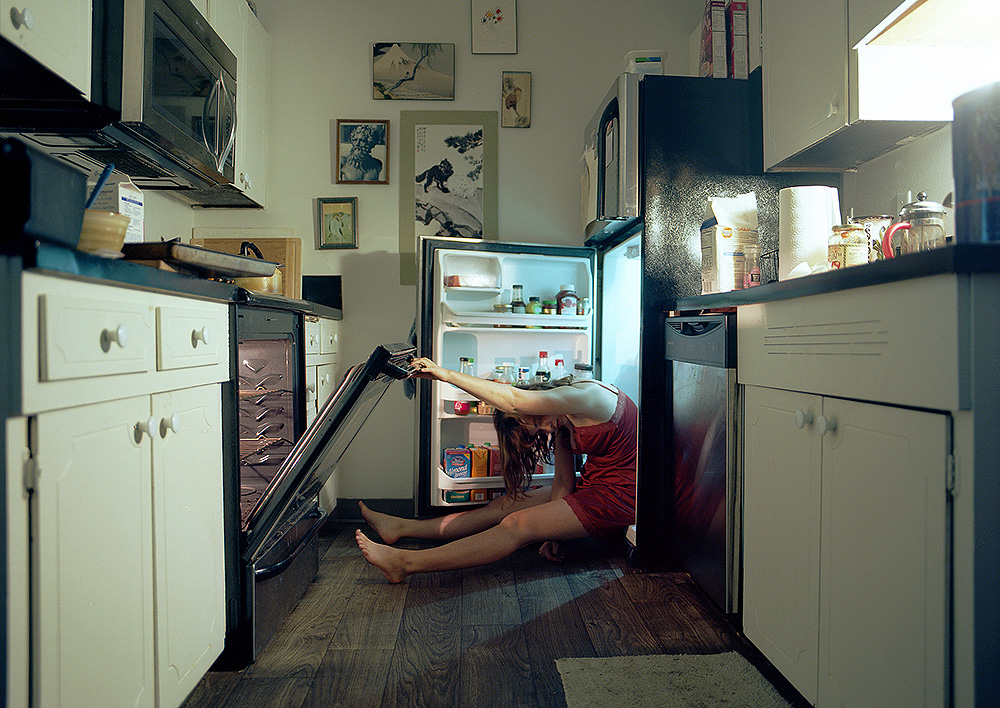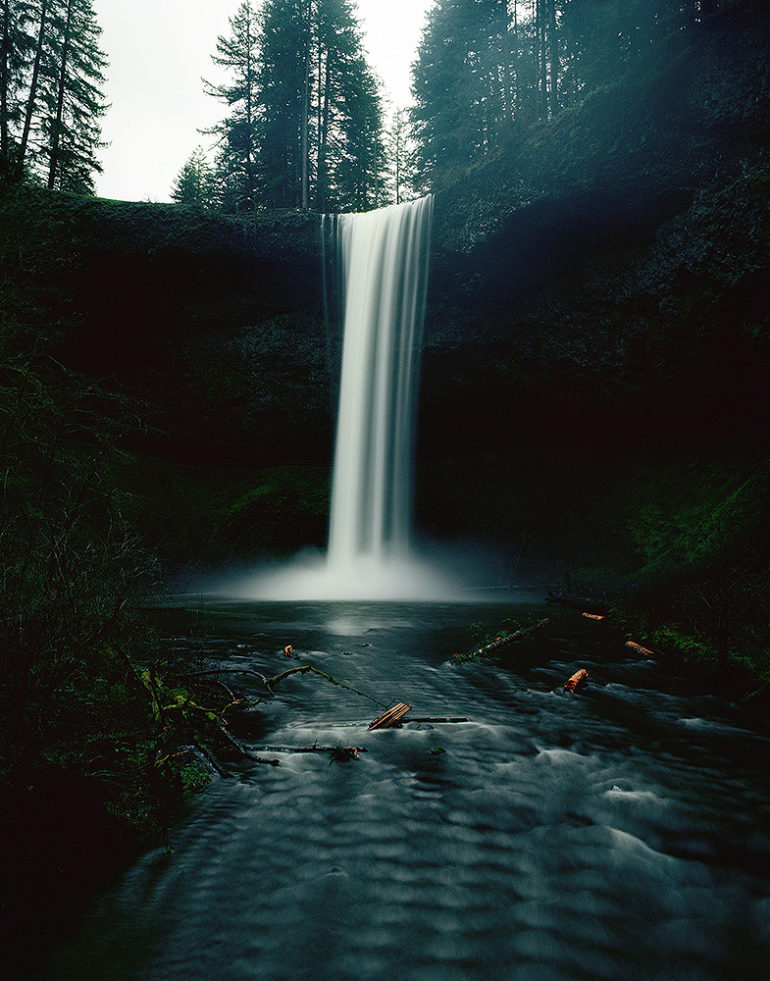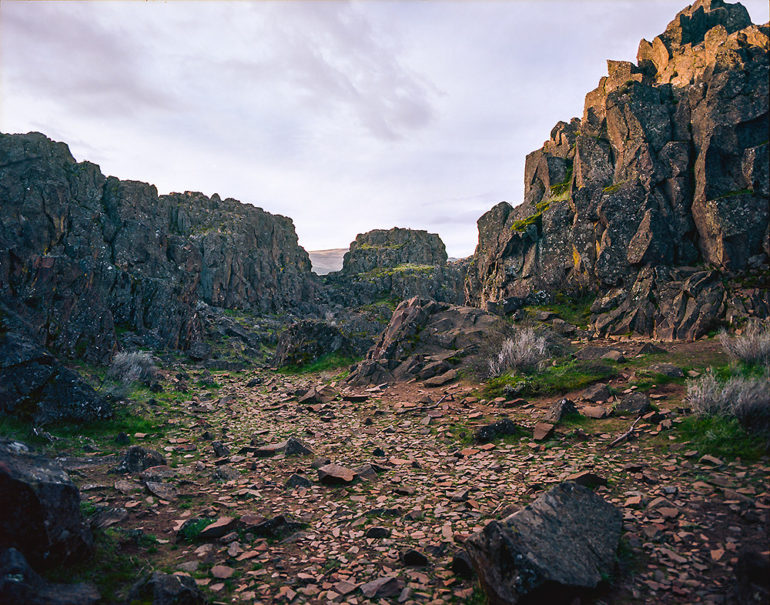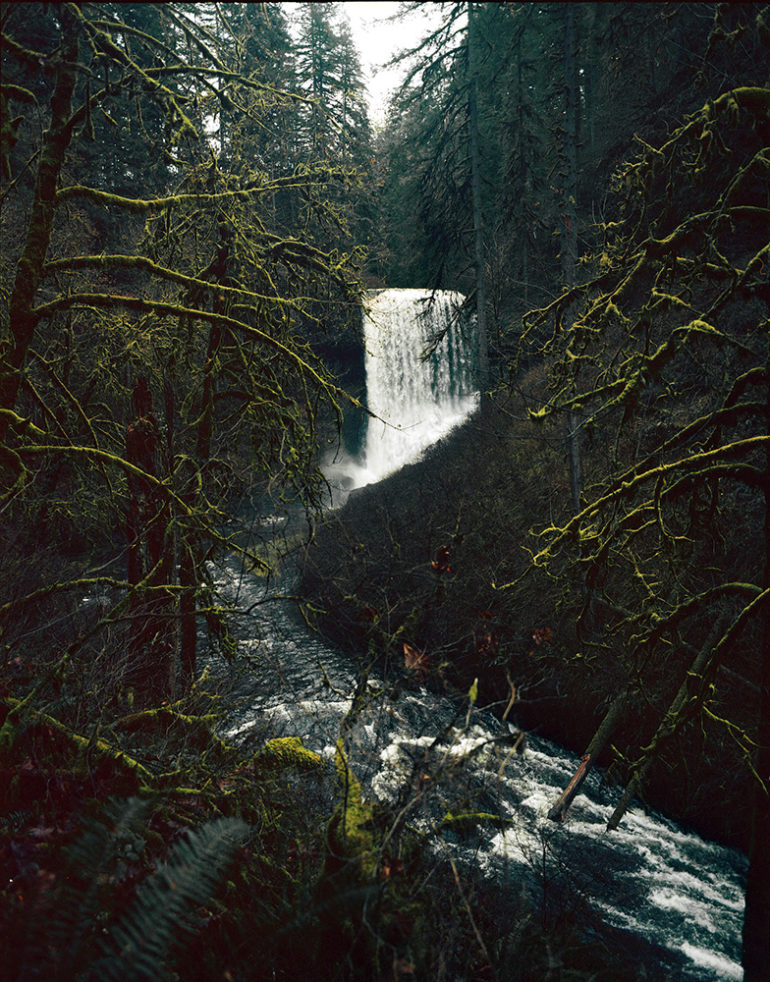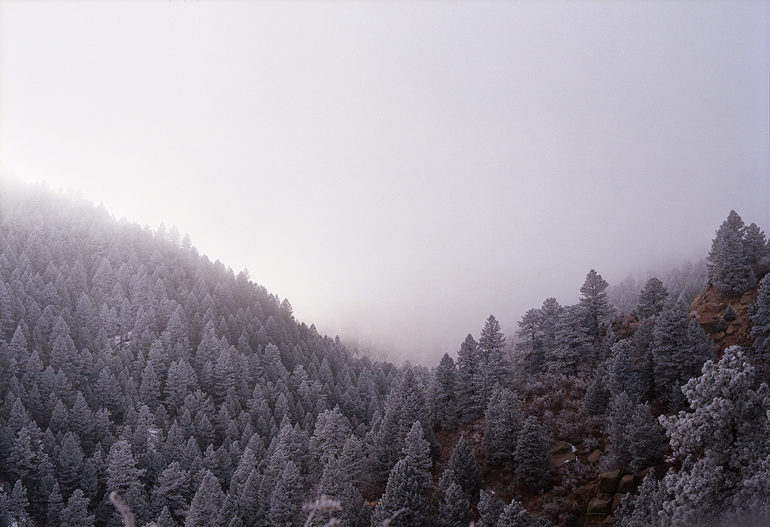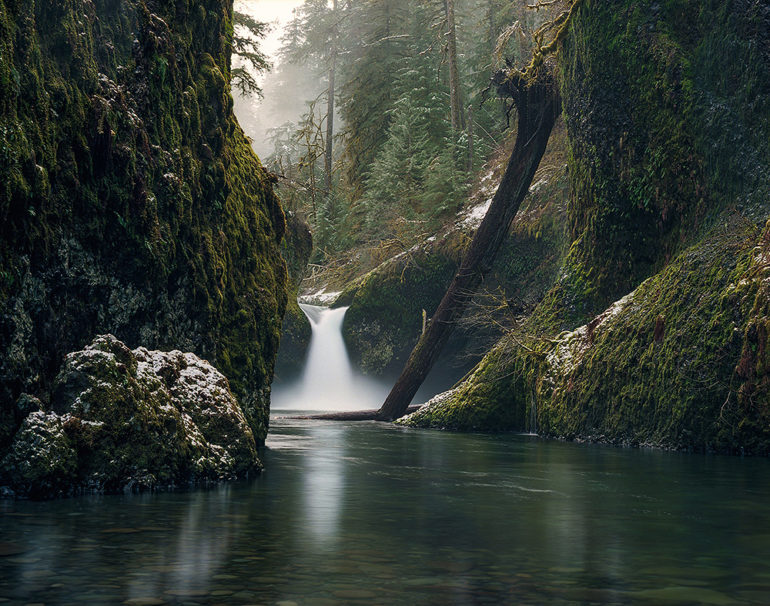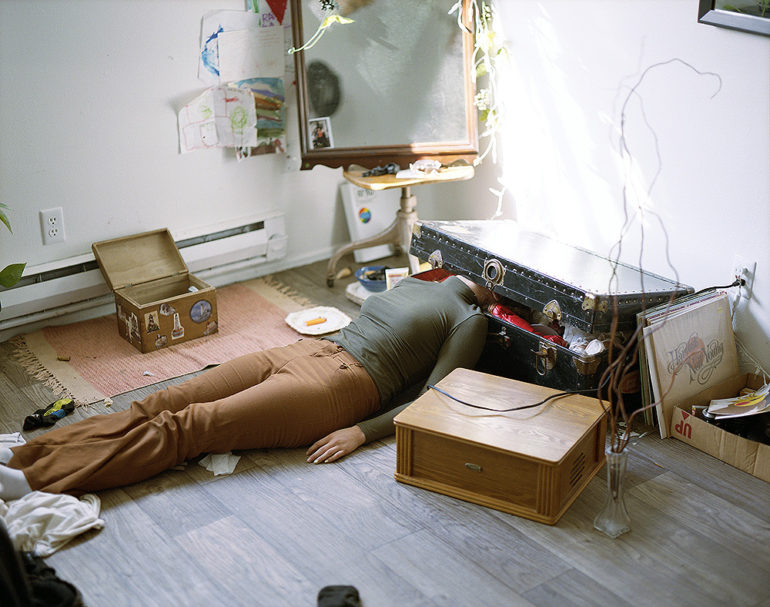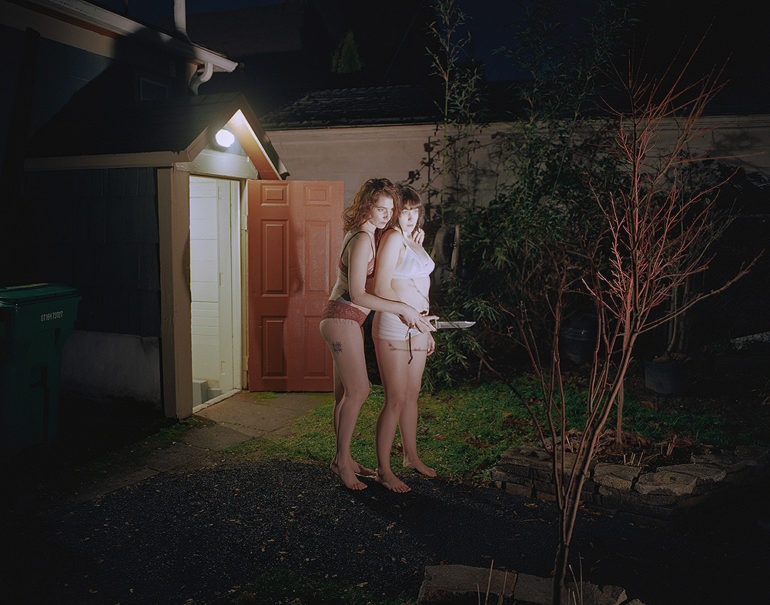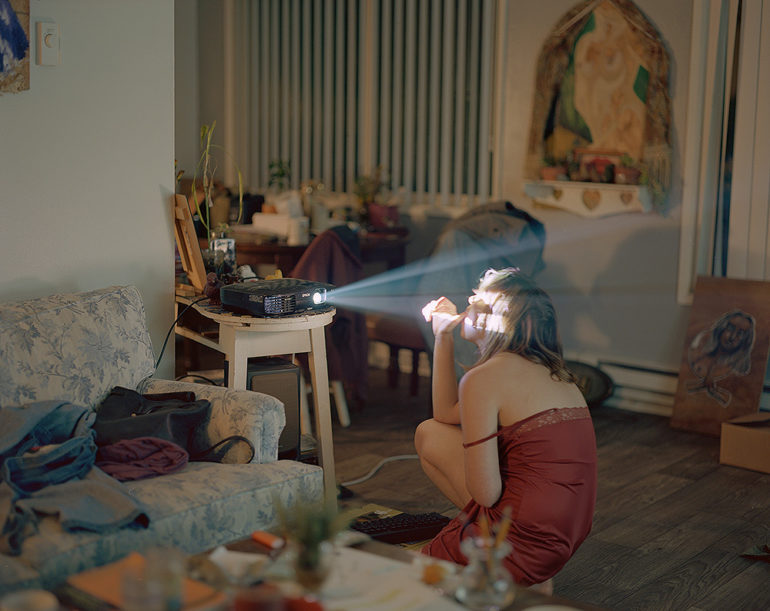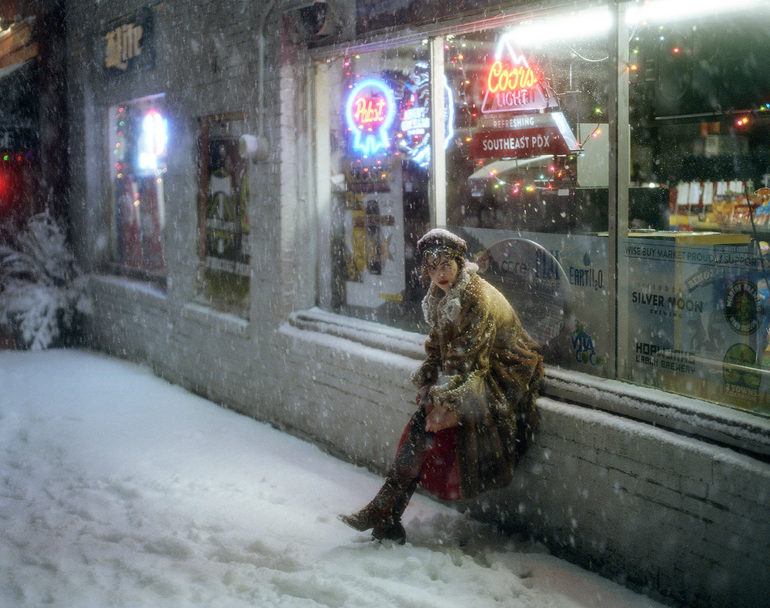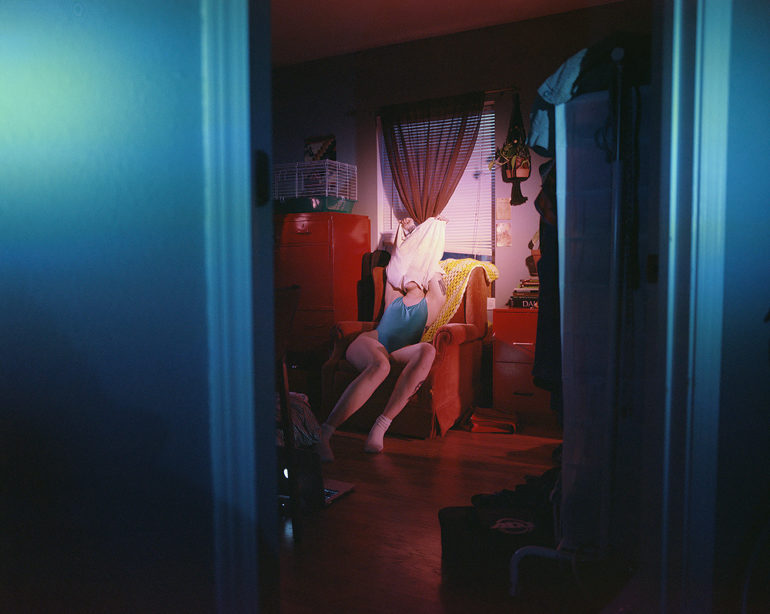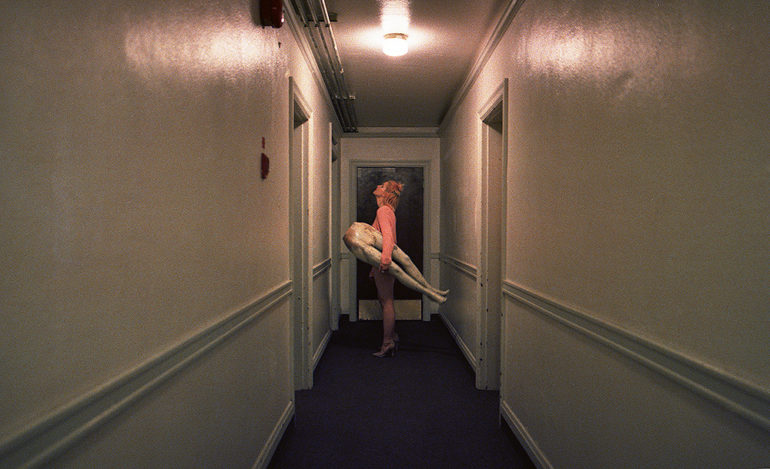All images by Jonathan Moore. Used with permission.
“I think I’ve been multi-talented in the arts for a long time and photography just stuck with me.” says photographer Jonathan Moore in an email to the Phoblographer. “I grew up in a few small towns in Tennessee. After high school, I worked odd jobs and toured the southeast playing guitar in a hardcore band.” Art stuck with and evolved with Jon quite a bit: from music into graphic design and then photography. Jon’s photographs draw obvious inspiration from movies and you can see influences from Stranger Things and Lord of the Rings for sure.
“Movies are often over-looked in terms of fine art, but pause anywhere during 2001: A Space Odyssey or There Will Be Blood, and you’ll know what I’m talking about.”
Jonathan calls Portland, OR home these days and used to shoot weddings and commercial photography. But he got quickly tired of that. So in the process of his evolution, he turned to film.
Be sure to take a look at Jon’s print shop and his Flickr for even more.
Phoblographer: Talk to us about how you got into photography.
Jonathan: When I was 14, I went on a trip to New York City with an art club I was in at school. My mother actually came along as a chaperone and brought the family camera (a Minolta DSLR). After we got those pictures developed, the ones we took on top of the Empire State building were the most striking to me. It was a gloomy day and we had pictures of people in the foreground looking outward over the city. Those pictures were mesmerizing. It made me realize that you can actually make a camera do what you want it to and not be an automated process. Since that trip I started collecting cameras here and there and took novelty photos and eventually got serious about it when I attended an art school when I was 21. I don’t often suggest going to school for photography, but it definitely opened me up to working with other students and learning a lot more than I would if I had stayed in my hometown.
I’ve always had the mindset of trying to do things on my own and teaching myself. Thanks to the internet, I found so many how-to’s and guides. I didn’t get serious until college. It really opened me up to what I really wanted to be shooting instead of always thinking about gear.
Phoblographer: What made you want to get into landscape photography?
Jonathan: I’ve always been drawn to nature. Every time I would go on a hike or go on a road trip, it just seemed natural to take pictures of what was in front of me. I say that like it’s very casual, but I did lug my Pentax 67 to the top of Mt Hood with me one time, so I very much love the idea of photographing remote and hard to reach landscapes.
Phoblographer: So you shoot a lot of film, both standard emulsions and Lomochrome Purple. What about film do you feel helps you to create in a new way that you can’t with digital?
Jonathan: After looking at all of my favorite photographers over the years, I realized that almost all of them shoot film. I wanted my work to look like that, so I figured I would give it a try. A more technical answer would be that the dynamic range of film is amazing and gives me a lot of play in post. I also feel that the pixel density to sensor ratio in most digital cameras is way too much and causes my pictures to look artificially too sharp.
Phoblographer: Which modern film photographers really influence and inspire you right now?
Jonathan: Alec Soth has always been an inspiration to me. Ever since he gave a lecture at my school, it motivated me to really approach my photography in a different way. It’s not always about the pictures themselves, but rather the story behind the pictures and how they came to fruition. Other film photographers that really influence me are: Greg Miller, Zeb Andrews, David Hilliard, Daniel Cronin, Erika Larsen, and Gregory Crewdson.
Phoblographer: Your photos, quite obviously are gorgeous! How do you go about showing off your final images? Is everything more or less done in camera?
Jonathan: Thank you! Unfortunately, I haven’t done any digital printing in 4 years until recently when I bought a large format printer. Most of my work goes directly to the web. I’m trying not to showcase a lot of it because I’m currently working on a photo book. I do print pictures on my enlarger here and there. Mostly to give to my friends and family.
Phoblographer: You shoot both digital and film. Do you ever see a day where digital photography may be just done with a phone or something and then otherwise people and artists will shoot with film? As a film shooter yourself, I’d love to hear your thoughts on the future of the analog community.
Jonathan: I see digital photography getting easier and easier. A lot more people will have access to nicer equipment than before, but the drive and passion won’t be there among regular consumers. I believe that if you’re serious about photography and art in general, then serious curators and artists looking at your work will know the difference.
I feel the analog community is definitely on a steady rise. I think it will stay that way for a while. Analog cameras have been around a lot longer than digital so the technology is perfected and still desirable for use. I also think it’s funny that most DSLRs were and still designed around film SLRs. For me, I’ll probably make the leap back to digital when a digital medium format 67 camera is released. Who knows.
Phoblographer: Do you feel that you get a certain peace of mind when you sit there working really hard on a photo to get it right in camera and then not have to chimp an LCD screen to see if you were right or not? Essentially, you can just move on in life, right?
Jonathan: Right. When I first started, it was kind of nerve-racking not to check my results. Most of the time, film is really forgiving, so being a few stops above or below is ok. Eventually, I became really confident in my exposure settings and what my photograph was going to look like, that I didn’t worry about it, anymore.
Phoblographer: Tell us about the cameras and films you use. Why do you choose them?
Jonathan: I love my Pentax 67. It’s been my main shooter for over a year now. Glass is cheap and excellent, and there’s a lot to choose from. It’s big. I’m a big guy, so it works out. It is the most solid camera I’ve ever held. I feel like I ace every shot with it. It’s also really simple. Ironically, the last thing I want to be thinking about is my camera when I’m taking pictures. Just doing.
I also bought a Burke and James 8×10 last year that I’ve been shooting photo paper with. That’s a lot of fun and easier than I thought it would be. When I have enough money and resources, I’ll shoot color with it one day.
My introduction to medium format was the Fuji GW690II (the 90mm version). A professor lent me it for one of my semesters in school and I fell in love with it. I remember it being so simple to operate. Since it’s a rangefinder, I had no idea if my shots were in focus or not for my first roll, but I never made one blurry image with that camera. The 6×9 size was amazing as well. Fuji made some of the most unique film cameras ever produced.
I tried the 645 format for a couple of years. The Hasselblad H1 being my favorite from that format among Pentax, Contax, and Bronica. I’ve owned a couple of Canon EOS 1VHS as well and I love that camera.
As far as film goes, I love Ektar 100. It’s cheap and really sharp. Portra and fuji 400 stocks are nice for skin tones but I personally don’t like the grain that it produces. Anyways, I feel like I can achieve good skin tones with Ektar 100 in post as I scan all of my images myself (I scan with an Epson V500 that I found at a thrift store for $10). I do like shooting black and white, too. I usually go with Delta 100 or HP5 and develop myself. I’ve shot a few landscapes with Velvia and Provia as well. While the colors are amazing, getting the right exposure is crucial since there’s less latitude to work with than c-41. I recently came into possession of a lot of slide film and I’m both happy and sad. It’s getting pretty expensive to process.
Phoblographer: What about your Lomochrome purple series? Do you have any plans on doing a book of that stuff the way you did with your other landscapes?
Jonathan: I shot one roll of the the Lomochrome purple through a 35mm Canon rangefinder and while I enjoyed the results, I came to the conclusion it’s not for me. I do appreciate alternative processes and films and encourage anyone to just go out there and try what they want to do. Figuring this stuff out is half the fun.
I am in the works of making a body of work of my narrative, storytelling photographs and publishing it within the next couple of years. I have a hard time marketing my work and crowd sourcing the funds to make it happen. One day!
Phoblographer: What made you want to get into surreal style portraiture and photography?
Jonathan: Besides my main influences like Cindy Sherman, Justine Kerland, and Gregory Crewdson, it was really amplified when I started working at my job which is a theatrical lighting company. I started to use continuous lighting more and found that it worked better for me. I felt like I wanted to leave more of an impression on the viewer, so I spiced things up a bit with colors and lights. Just adding one light can add so much to a scene that the photographer or viewer would have never noticed before. In short, I really just like making a scene from a movie.
After shooting for a few years, I felt that my older photos really lacked any depth or meaning. It came to a point where it was like, ok, I have this really nice camera and I’m just shooting pictures of my friends and token photos of landscapes. I needed to start shooting in the mindset of “Is this museum quality?” or “Would I present these photos to Magnum or Guggenheim?”. The most important thing I learned in school was the question, “Why?”. That really changed how I approached everything.
Phoblographer: What do you feel typically motivate you in the creation process of a surreal photo? How do you go about getting your ideas and formulating them into actual photos?
Jonathan: My main motivation is curiosity. I see paintings, movies, and other photographers and try to pick it apart to see if I can create an alternative scene of my own. I’ve always worked with what I had at the location. Unfortunately, my work is very spontaneous and I feel like nothing is never planned out. Sometimes it’s fun that way, but I do have some shoots in the works that will require a lot more of production and planning.
Check out more photos from Jon over at his Instagram.


